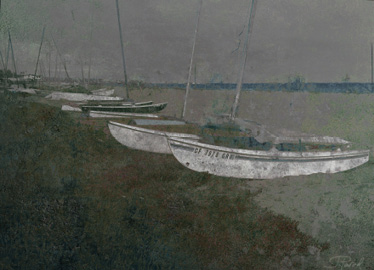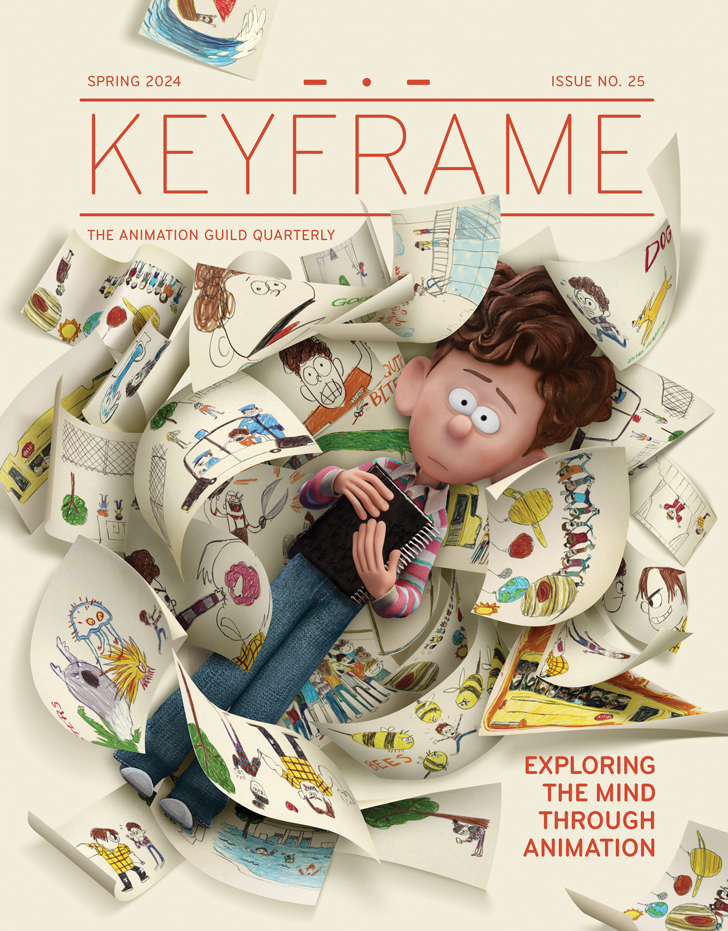
Born in Northern California and raised in the Sacramento suburbs, Joel Parod always knew he had an affinity for art. Before targeted Instagram ads made pet portraits a booming industry, his mom’s friends would hire him to make pointillism ink drawings of their four-legged friends. He illustrated his book reports, and in sixth grade, when he met now-caricature artist James Malia, the two would draw comic strips together. In high school, he designed the cross country and track teams’ logos and T-shirts.
Parod says that graduating from San Jose State University in Illustration and Graphic Design in 1994—just before the era of blockbusters like The Lion King or Toy Story—meant that “animation was never even discussed as a career.” He took a job at an educational software company, while also doing freelance work like book cover illustration for St. Martin’s Press. Although the company did give him projects to work on when he asked for more responsibility, it was ultimately unfulfilling.
-

Toni 053111#1 – a 25 min. figure study in oil on canvas -

Boats on the Beach
“One day, I shoved away from my desk, and I was like, ‘I just want to paint for a living,’” Parod recalls.
Sometimes, throwing a desire out into the universe yields results. About a month later, a former professor called to tell Parod that three animation studios were coming to the campus to do portfolio reviews. He submitted, and Warner Bros. liked his work, but he needed more life drawing skills. After taking a class, he formally applied for an internship. The result: a life-changing answering machine message. He had two weeks to pack his bags and get to Los Angeles.
“The intern program was like another level of college because we were learning a lot about animation and the history of animation,” Parod says. “It was a crash course. They taught us the basics of how to animate walk cycles and effects animation. They told me I was better with a brush than a pencil, so they trained me as background painter. All 12 of us interns graduated the program and were hired to work on the production of Quest for Camelot. I felt lucky to be there!”

Another of Parod’s first jobs for Warner Bros. included background painter on The Iron Giant, where Art Director Alan Bodner liked one of his concept paintings so much that he was assigned to paint the opening scene of the giant hurtling through space and crashing into Earth through the eye of a hurricane. “I was so excited about that,” Parod says. “The background of space and stars was almost as long as I am tall.”
Being at Warner Bros. turned out to be fortuitous for his personal life, as well. Parod’s wife, Claire Armstrong Parod, is a skilled animator who is known for, among other things, helping to design the Lola Bunny character for the first Space Jam movie. The two met at a studio art show when Parod was standing beneath a painting of himself—as a vampire—done by a fellow intern. In the mid-2000s, the couple worked together on animated commercials for brands like Charmin and United Airlines.

Being at a small company gave Parod experience as a designer, art director, co-director, animator, editor, and painter. As well, his ad experience led to work as the character painter on the first Tinker Bell movie because the art director loved a painting he had done of an animated flower character dancing with a product logo in an otherwise live-action commercial. He continued working on this franchise and its promotional shorts (designing props, art directing, and more), and he’s also worked as a Visual Development Artist on Scoob! and Space Jam: A New Legacy. Recently he did almost all the character painting (including some new monsters) for the prequel film, Scoob!: Holiday Haunt.
On the latter project, he also painted color keys, “which I really enjoy, to inform the lighting department how the color and lighting affect the characters and the environments in each sequence. It’s like illustrating the movie,” he says.
Simply put, Parod loves to paint—any way he can and as much as possible. He loves plein air painting because “it’s amazing how much things change even in half-hour or hour increments,” he says. He’s also a photographer in his off hours, an artform that he describes as “painting through a different lens.” He’s worked with sculpture and figure drawing, as well, and he’s a musician who, naturally, designs his own album covers.
“For me it’s about being an artist and creating art whether it’s for the movies or just for myself,” Parod says. “I think all of that experience has made painting characters come more naturally to me. I plan to keep painting long after I retire.”







.png)